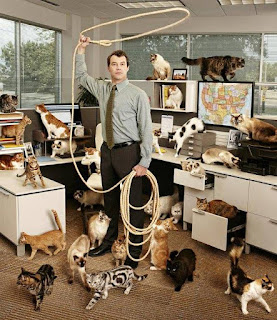A Model of Coaching for Wisdom
Associate Professor of Psychology, Igor Grossmann at The Wisdom and Culture Lab at The University of Ontario, Canada has been pivotal in establishing a practical framework for wise thinking that lends itself to coaching and mentoring. According to Grossmann and colleagues, “wise thinking is a skill. It is not simply an attribute of a person but rather a property of person-in-context. The potential for wise thinking emerges in the interaction of the person and their environment”.
Grossmann and colleagues have established that wise reasoning mediates the effects of age on wellbeing. In other words, just thinking wisely improves life. Wisdom needs to be considered in the context of everyday life according to Grossmann and colleagues. The central characteristics of wisdom have a dynamic component. Just because you are wise in one context does not mean you will be wise in another. Understanding the situational contingencies where wise thinking may lead to wise actions is vital to promoting wisdom.
For example, one way to buffer thinking against bias in cases where self-interests are unavoidable is ‘ego-decentering’. In other words, viewing events from a “fly on the wall” vantage point.
In situation-specific experimental conditions, Grossmann and colleagues have been able to demonstrate that wise reasoning varies across cultures (e.g., younger and middle-aged Japanese showed greater ability to reason wisely than their U.S. American counterparts), women are somewhat better at wise reasoning than men, and wise reasoning dips in middle-age (35-50) and then rises.
Grossmann has formulated a model of wise reasoning and a constructivist perspective on teaching wisdom. His framework of wise thinking in everyday life includes (a) intellectual humility or recognition of the limits of one’s own knowledge, (b) appreciation of perspectives broader than the issue at hand, (c) sensitivity to the possibility of change in social relations, and (d) compromise or integration of different opinions.
From the model of wise thinking, Grossmann and colleagues designed the Situated WIse reasoning Scale (SWIS) to assess responses to experimental situations. For example, under Weigh up uncertainty and change: “I looked for different solutions as the situation evolved”; under Intellectual humility: “I looked for any extraordinary circumstances before forming my opinion”; under Search for integration and compromise: “I tried my best to find ways to accommodate both of us; under Engage others’ perspectives: “I tried to see the conflict from the point of view of an uninvolved person”.
I modified some of these questions to make it easier for use in coaching and mentoring and came up with a WISE template of my own in 2018. Subsequently I have incorporated the Heath Brothers more pragmatic approach to making better choices – the WRAP process: Widen your options: uncover new possibilities and consider them simultaneously through multitracking; Reality-test your assumptions: ask disconfirming questions, zoom in and out; Attain distance before deciding: shift perspective and clarify core priorities; Prepare to be wrong: prepare for bad outcomes as well as good ones.
Modifying these descriptors leads to a revised WISE template for applying the 3rd System of thinking to help make effective decisions in complex circumstances. It helps to circumvent logical fallacies and cognitive biases, enables us to consider likely consequences in the short- and long-term, and it challenges our thinking to find outcomes which are more likely to benefit the common good:
W- Widen your view
Time pressure pushes us into grasping the first viable option. Often, there seems to be a stark choice - choose A or B. It requires much less effort to narrow the field down to a simple duality of options and then choose the least disruptive one. However, the truth is that there are many alternative scenarios that exist in "possibility land". We just have to step back, take some time, and widen the scope of our search for different approaches to the issue.
Useful coaching questions include:
Useful coaching questions include:
· "Instead of either/or, whether/or not, what other options are there?"
· "What is most important to you right now"
· "In what ways could your opinion be incorrect?"
· "Who has solved this problem before (Google it)?"
I – Interrogate reality
We make assumptions and jump to conclusions too readily. Is the reality I’m seeing the same as the reality you’re seeing? Acknowledging the context and the “territory” within which the issue sits is an important prerequisite to knowing how best to evaluate the various options and which tools to use. Simple, complicated, complex, and chaotic contexts each call for different responses.
Useful coaching questions include:
· ”What would have to be true for each of these options to be the best possible choice?”
· ”What’s the biggest obstacle to this being the right decision?”
· ”What am you prepared to give up for this option to become a reality?”
· ”In what ways could this response fail?”
S - Sense what is emerging
Contrary to intuition or System 1 thinking, we need a way to move past the fluttering of emotion and allow a deeper understanding of the nature of the issue. Senior Lecturer in Work and Organizational Studies at MIT, and founder of the Presencing Institute, Otto Scharmer calls this "presencing" - observing the problem and sitting with it to see what insights emerge. The more complex the issue, the more we need to pay attention to emergent properties. Our familiar tools and resources for "fixing it" won't work.
Useful coaching questions include:
Useful coaching questions include:
· "Imagine it is 6 months from now and this decision is a failure, why did it fail?"
· "What is the essence of this issue (what is your deep knowing)?"
· "What is the best possible future that I am bringing about?"
· "What might other people think or feel who are watching me make this decision?"
E - Enact a way forward
However, it's possible to be too contemplative about the problem and not do anything about it. We need to take action. The best way is through a series of experiments, pilots, or prototypes to explore what will most likely be the best action to take. This is exactly what entrepreneurs do, they "fail forward and fail fast". Only through taking some kind of action will we learn what works and what doesn't – the process of “discovery-driven learning”.
Useful coaching questions include:
However, it's possible to be too contemplative about the problem and not do anything about it. We need to take action. The best way is through a series of experiments, pilots, or prototypes to explore what will most likely be the best action to take. This is exactly what entrepreneurs do, they "fail forward and fail fast". Only through taking some kind of action will we learn what works and what doesn't – the process of “discovery-driven learning”.
Useful coaching questions include:
· "What can I start doing, now?"
· "What is an appropriate threshold for me to take action?"
· "In what ways can I experiment or prototype these options?"
· "What can I learn from this?"
The purpose of the WISE template and related coaching questions is to provoke wise thinking in relation to the particular issue or decision confronting the leader who is being coached or mentored. Used in this way, it might be expected to improve the likelihood that the leader will make wiser decisions across a broader range of problems.




Comments
Post a Comment